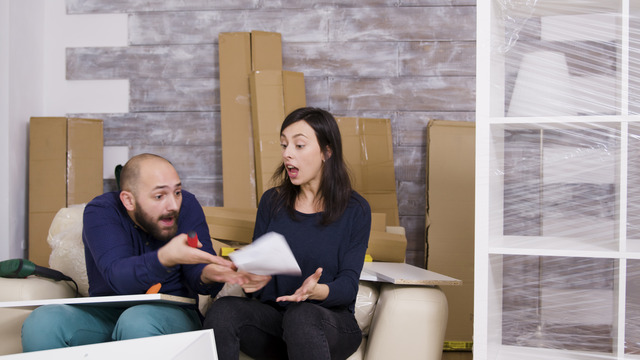
You’ve come to the perfect site if you’re wondering how to prepare your home for a move! When moving, the long list of tasks you must complete can seem daunting. We can help with this issue, so don’t worry. If you plan and prepare appropriately, you can cross everything off your to-do list and still have time for relaxation. We created the best moving preparation guide to demonstrate this. You’ll be ready for move-in day and able to quickly adjust to your new house if you follow our tips. Now, without further ado, let’s begin!
Ten tips for how to prepare your home for a move
Here are 10 detailed guides for how to prepare your home for a move:
1. Make a Moving Timeline
Three separate components make up an excellent move-out plan: packing, organizing, and budgeting. Packing and organizing your possessions will take up most of the preparation process because the transfer usually takes place in a single day. If you need to figure out when to begin moving-related preparations, figure out how long it will take to clean out every room in your house. Generally speaking, we advise allocating at least one day for each room. Have you just had the weekend to prepare? It will probably take you an additional week or two to prepare everything.
2. Create a To-Do List
Though it may seem laborious, a moving checklist is practical. To avoid wasting valuable time attempting to recall what needs to be done, writing down or typing your to-do list can help it stick in your memory. It is quite beneficial if you’re relocating overseas.
Items to add to your checklist are:
- Making arrangements with utility companies to arrange for shut-off services
- Mail forwarding settings are helpful.
- placing a packing material order
- Anything you want to make sure you remember to do
- Mark completed tasks with a checkmark to help you keep on course.
3. Establish a Budget for Your Move
Homeowners often overlook several move-out costs. Make sure to budget appropriately, whether employing a U-Haul or professional movers to prepare your home for a move. It’s crucial to remember that your budget may impact your moving timeline. While moving will take longer when working with a firm, the cost will increase. Even though moving everything yourself can save money, it may cause your relocation to take several extra days or weeks. Whichever path you choose, there are some expenses you’ll need to set aside money for.
Materials for packing if you’re moving independently:
Your whole house cannot fit in a suitcase. Invest in packing tape, bubble wrap, and sturdy boxes to ensure the safe transportation of your belongings.
- Furniture insurance. Maintaining your furniture in immaculate condition comes at an additional cost.
- Equipment relocation. It’s crucial to unload your bulky, hefty belongings safely. This portion of the relocation process will be streamlined using a dolly and ramp.
- Fuel. You will likely only be able to move some things on one trip. You’ll undoubtedly need to fill your tank if you drive back and forth frequently.
Moving expenses if you’re working with professionals:
After all, you are paying them to move your belongings!
- Packing services. Although it will cost you money, hiring professionals to pack for a move will save you time and stress.
- Services for unpacking. The business will unpack your items, saving you the trouble of unloading the truck.
- Extra fees. If a company has to carry something into an area that is hard to reach, they may charge extra for moving it up several flights of stairs. To save money, use a moving company without additional fees.
- Courtesy costs. Tipping movers or buying them lunch is courteous, but it adds up quickly.
4. Clear Everything and Donate
Cleaning is an excellent way to prepare your home for a move. It helps you eliminate unnecessary or unwanted items, making packing easier. Sort everything into piles into three categories: sell, donate to a charity, or retain. Start by going room by room. In addition to clearing up clutter in your house, giving items in poor condition to a nearby charity will result in a tax deduction. Additionally, you’ll save money because your local moving company will need more work!
5. Packing Materials
Having the proper supplies is crucial for a successful move when packing. Selecting the boxes that best suit your demands is crucial because they are available in various sizes and shapes. While larger boxes work well for lighter items like pillows and linens, smaller ones work well for heavier items like kitchenware or books. Using robust boxes with handles is also essential to prevent breakage during transportation.
Foam sheets, newspaper or other paper products, bubble wrap, and peanuts are necessary packing supplies. Bubble wrap is an excellent option for delicate objects like electronics or glassware to prevent breakage during transportation. Just wrap each item separately before putting it in a box. In a box, packing peanuts act as a cushion between items. Pack any remaining space with these items to ensure everything is safe for transit. When wrapping delicate objects, newspaper and other paper materials can also be used as padding; just be careful not to leave ink stains on your possessions. When moving furniture in confined areas like doorways or staircases, foam sheets shield the corners from dents and scratches.
When organizing your packed boxes for relocation, labeling is essential. Identify every box’s contents to ensure everything is recovered en route. It includes noting which room in your new house each box belongs in. Furthermore, labeling any box holding fragile objects as “fragile” will notify movers of their unique handling needs when they reach their destination. Lastly, numbering each box can make it much easier to locate lost items after you get to your new location by helping you keep track of where everything has disappeared.
Packing supplies is a critical component of a successful move. Knowing how to prepare your home for a move. And what supplies to use now means you can concentrate on cleaning and organizing your house in preparation for the big day.
6. Make plans for your plants and pets
On the day of the move, prepare your pet in advance. Consider hiring a sitter to watch your pet while you are away or boarding them at a kennel. Pet security is crucial because your local moving business leaves its external doors open most of the day. If you own houseplants, organize to move them to your new residence or think about donating them to loved ones.
7. Make a DIY Move or Hire a Mover
Once you’ve established your budget, you can decide whether to DIY the move or employ professional movers. It’s time to look into the best moving firms if you plan to hire movers. Consult your friends and relatives for recommendations first. Before choosing a company, compare quotations from a few. Consider using a specialized moving service if you’re moving more than 150 miles or out of state. Doing your homework on the top cross-country movers can provide additional possibilities.
Get quotes for equipment and trunk rentals if you plan to prepare your home for a move yourself. Get family and friends to assist you with the loading and packing. (And remember to provide lunch and dinner, too!)
8. Begin gathering relocation goods, such as newspaper for wrapping and boxes
Purchase or order boxes, packing supplies, and moving equipment, including tapes, bubble wrap, markers, etc. Remember to request specialty products such as dish barrels, wardrobe boxes, mattress covers, etc.
9. Locate dependable home maintenance companies
Find one before your toilet spills or your air conditioning unit fails. Decide who you want to engage to assist with house maintenance by researching local service providers in your region. Examples of these specialists include handymen, plumbers, and electricians.
10. Get to your new house ahead of the movers
You should be available to respond to any inquiries your mover may have regarding the setup of your new residence. They’ll need to know precisely where to put your bed frame or where to put the toy bins for the kids.
It is inconvenient if the movers show up to find driveway obstructions from the neighbor’s RV, locked doors, or damaged keys. You shouldn’t encounter any significant issues now, although little hiccups can cause delays longer than anticipated.
Remember to arrive early and be ready for everything.
5 Full Service Movers To Prepare Your Home For A Move
Here are five full service moving companies that can help you to prepare your home for a move:
American Van Lines
JK Moving
North American Van Lines
United Van Lines
Advice on How to Prepare Your Home For A Move
Make a “keep” and “toss” pile in every room of your house as you declutter; this is crucial if you’re moving into a smaller residence. Concentrate on the items you bring with you after deciding what to discard. To ease the packing process and arrange your belongings, use these recommendations.
- Make a list. As you pack, please list the items you want to keep in each room and cross them off.
- Room by labeling boxes. Keep distinct boxes labeled for your living room, kitchen, bathroom, and bedroom.
- Enumerate the contents of each box. Write the contents of each box in the room name along with it. You won’t have to check your inventory list twice or three times.
- Hold everything together. Are you going to decorate your new family room with the same pieces of art and furniture? Keep them grouped for quicker and more effective packing.
Packing Advice for Moving
Assemble each room independently. Use your storage bins correctly—they are already labeled! Pack every inch of one room before proceeding to the next.
- Safeguard expensive things. To ensure their safety, wrap sentimental artifacts and family heirlooms with bubble wrap. Additionally, it would help if you properly packed them into your car.
- For heavier products, use smaller boxes. A compact, heavy package is easier to handle than a large, heavy one. It will prevent you from putting too many heavy items in one box, making transferring almost impossible.
- Last, put your tools in the bag. Wait to box up tools if you need them to disassemble furniture. Additionally, it would be best to undertake a few renovations when moving into your new house.
- Create a kit for “first night.” For your first night in your new house, have a separate box ready with linens, toiletries, phone chargers, and anything else you might need.
Follow these steps to prepare your home for a move. Ensure your move goes as smoothly and stress-free as possible by following the above-described guidelines. Obtain all the packing materials you’ll need first, then spend some time purging and organizing your stuff before hiring movers with experience to ensure a safe and secure transfer. Last but not least, get your house ready for the transfer to ensure a smooth transition. You’ll be prepared to handle any move quickly and confidently if you keep these pointers in mind. So remember, when getting ready for a move, preparedness is vital.



